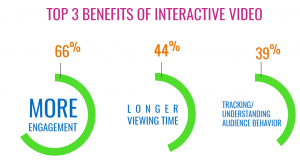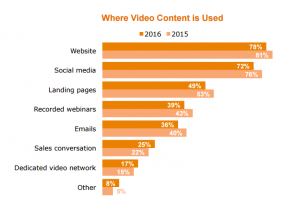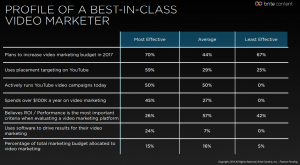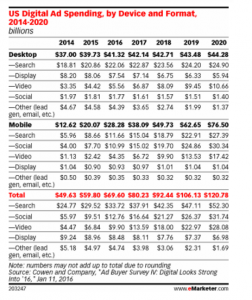Two mega events in 2017– Super Bowl and the annual Oscars, left me wondering how many viewers watched the ceremonies online — be it via live streaming apps, or on hosted TV channels! While it may take some time for data scientists to come up with accurate data for these kind of metrics, identifying the reasons why video marketing is the go-to martech solution for advertising in 2017 can be summed in the image below.

What does Big Bang in martech look like? Closest analogy that I can draw in martech is today’s announcement about video viewership –
“YouTube viewers watch videos for more than 1 billion hours per day, which is 10X growth since 2012! Nielsen data suggests that American viewers watch 1.25 billion hours of TV per day.” – WSJ
Wow… And that’s not even counting the videos served on social media. Just a year back, most businesses considered digital video as a one-off marketing medium to create brand value. Despite the proliferation of YouTube and Facebook videos, video marketing remained a dormant area until Snapchat showed how to attract big brands with video. Enter Snap Stories and things changed rapidly from a marketer’s perspective. CMO’s are realigning their martech stack to accommodate video marketing tools for social media and B2B networking.
Still wondering if spending on video will really work for you? Here’s how you can justify spending on a relatively unexplored martech territory. Let’s make things easy for you.
5 Ways to Disrupt Video Marketing in 2017
- Video or Social? Why not both!
Have you thought about doing a Live stream campaign? If not, your marketing efforts may not capitalize on the readily available engagement opportunities across social media.
By the end of 2017, 2.6 billion social network users will have been exposed to an average of 32 videos. CMO’s need to equate the possibility of bringing video marketing to monetize their social media engagements more effectively.
- New Ways to watch Video
Horizontal, vertical and then…
Wearables!
You can’t win the video marketing competition without a Mobile-First vision for 2017. Mobile is the most preferred consumer device that represents the explosion in video consumption. The disparaging fight of loyalty between Horizontal and Vertical formats has lost its prominence with the entry of a new video technology – wearables, like Snapchat’s Spectacles are currently hot opportunities for brands.
No more staring at the screens and adjusting the video quality. Snapchat’s Spectacles are what we call “eye candy” for the martech fraternity. Relish it.
- Click-within videos
Why serve readable content to your customers when you can awe them with real-time videos? Clickable videos of your content enable customers to view the product in action, allowing them to make quick purchase decisions. By merely clicking over the product seen in the video, customers can be directly navigated to the selected item’s gallery.
Recommended tool for clickable videos – ConciseClick by Clear Media
- Video Email Marketing
Make your email marketing more convincing by adding a touch of visible reality into each mail. Email KPIs witness an upward trend the moment consumers are served video, boosting open rates by 19% and click-through rates by 65% compared to traditional text emails.

B2B CMOs can expect to see an astronomical increase with video email marketing ROI in 2017, especially “live” campaigns around events, product launches or celebrities, or a live Q&A session.
Streamsend provides an intuitive email marketing platform, enabling marketers to roll out video campaigns effectively based on its ingenious behavioral automation capabilities. Benchmark is another video email marketing solutions provider that let you build a customized 1:1 messaging channel instantaneously.
- Programmatic Video
Programmatic video marketing and advertising allow your branded content to reach premium consumers via desktops and mobile.

Ad publishers can choose to play pre-roll, mid-roll, post-roll, in-banner and targeted video ads based on programmatic algorithms. As advertisers switch their ad spending towards video platforms, marketers need to reach targeted audience and drive them through the conversion funnel with programmatic video.
What stops CMOs from diving into Video Marketing?
Despite the proliferation of video as a major stack in martech, CMOs are still unsure about the true view of customer experience across channels. Though budget remains the single most deciding factor for CMOs to joist past video marketing solutions, lack of video capabilities for B2B commerce is also one aspect that remains unattended in martech ecosystem.

There are still some crucial pieces of the puzzle missing – marketers will need to address these to thrive in providing video marketing solutions:
- Programmatically-driven premium video inventory for omnichannel marketing
- Seamless integration with existing marketing automation software for email, content syndication, sales collaboration and enablement, and retargeting
- Transparent reporting metrics, including number of video impressions, number of paused and skipped videos, and number of completed videos
- Contextual video, similar to what Conversant offer, to build a brand-safe video marketing strategy
- Mid-rolls and pre-rolls video monetization using a single URL for OTT, mobile, desktops and gaming consoles, just as Brightcove Once does
Video marketing, in 2017, will be about personalization, synchronizing harmoniously with other marketing efforts throughout the customer journey, orchestrated across the web, mobile, social, OTT and app messaging. Embrace disruptions in video martech to make more meaningful, ROI-centric impact on consumer behavior.


